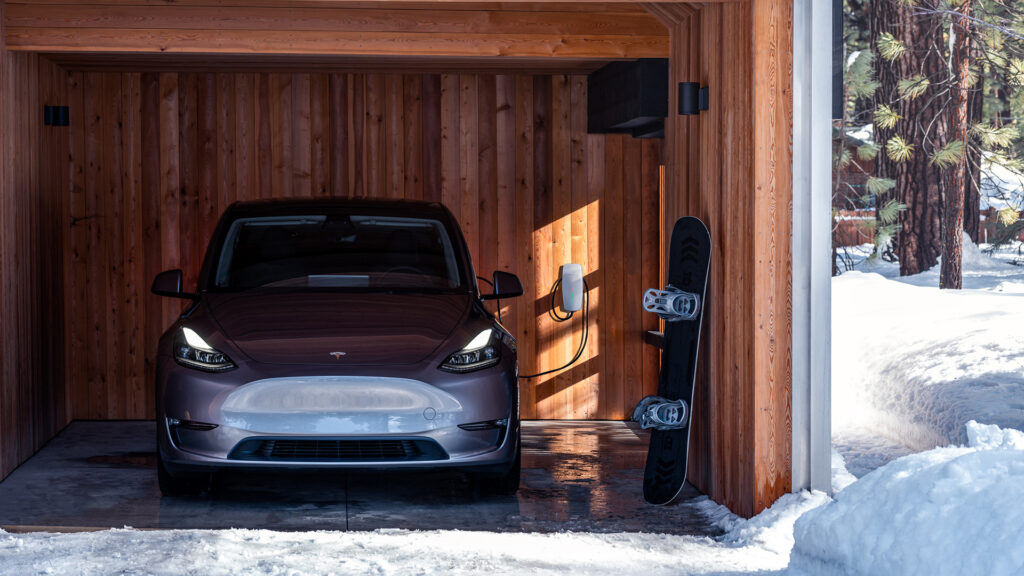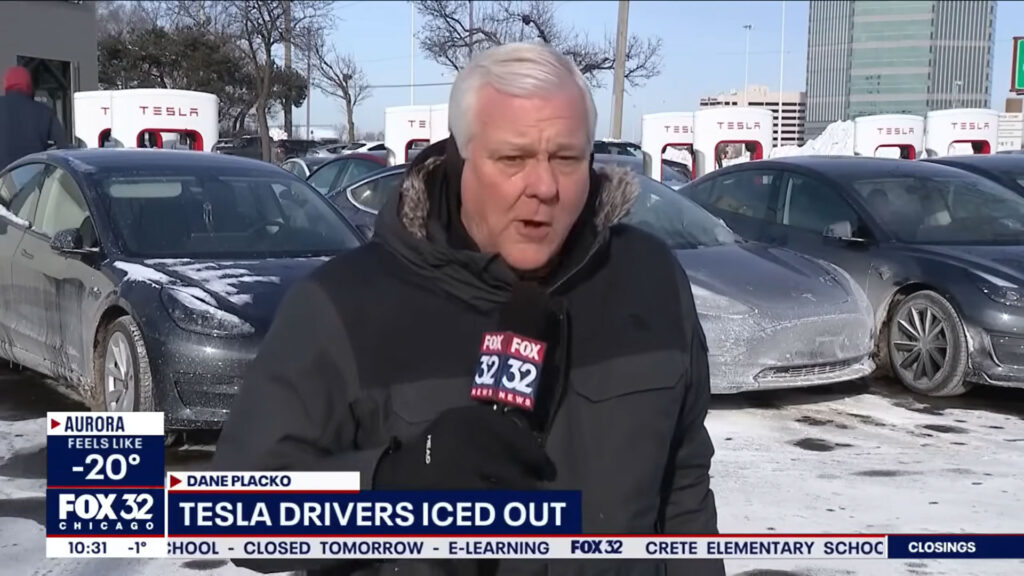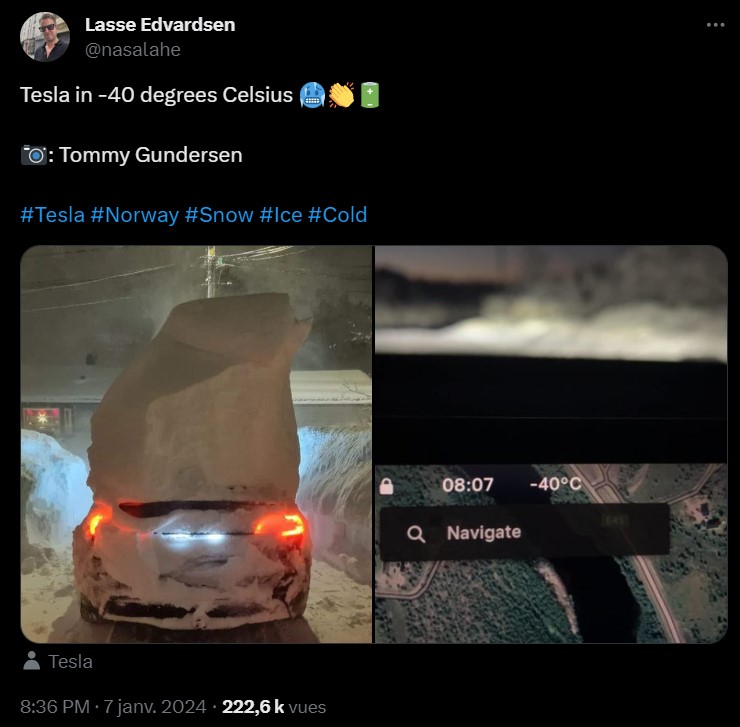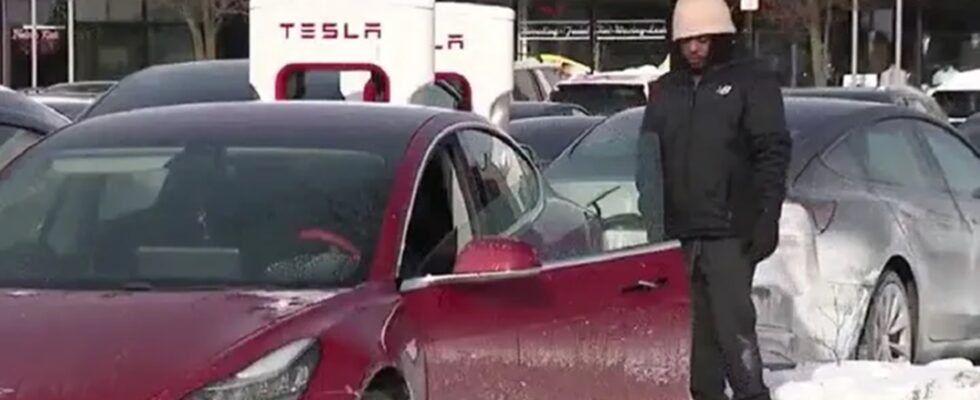Opponents of electric cars have found a new argument to exploit en masse, without even checking whether it is true. According to them, electric cars break down in the cold. True or false ? It’s time to sort this out.
Dozens of Teslas are breaking down in some large American cities – such as Chicago – due to the polar cold. Without enough range to return and unable to charge at the Supercharger, these Teslas are sometimes abandoned in the charging station parking lot or towed to the nearest Tesla center, as described by Fox32 Chicago.
This American news item, which has made the headlines since January 15, will certainly give food for thought to anti-EVs. However, appearances are somewhat deceiving. A bit like electric car fires, the slightest story going against electric cars is quickly exploited to make a generalization. Except that the generality here would be that some Tesla owners do not know how their vehicle works and do not follow the brand’s recommendations.
Electric cars don’t specifically break down because of the cold
Like any vehicle running on lithium-ion batteries (like Vélibs in Paris), electric cars are quite sensitive to extreme temperature conditions: too cold or too hot.
Negative temperatures mainly have two consequences:
In freezing temperatures, it is therefore strongly discouraged to play with remaining battery capacities in 1 digit. If in summer, we can have fun arriving at a supercharger with 0% estimated autonomy, in winter, it is better to keep a good safety margin.

For the rest, the electric car would tend to fare better than its thermal counterpart. If the traction battery (or the 12v so-called low voltage battery) is not discharged, the electric vehicle will operate regardless of the temperature. On a thermal vehicle, exposed to polar temperatures, various breakdowns can occur, in particular because of the fluids necessary for the operation of the engine. In certain cities in Russia, cars stay with the engine running 24 hours a day to prevent the fuel from freezing in the hoses; there too, consumption skyrockets in winter.
Tesla: forgetting to preheat will give the impression that the battery is no longer charging
In the report broadcast by the American channel Fox, several Tesla owners testify saying that the charge did not want to launch on the supercharger. The terminal is not necessarily broken, however. The reason is probably that they did not preheat the battery before coming to recharge.


This can happen to those who do not systematically program the GPS for the slightest trip in a city they know by heart. Except that without this programming of the GPS to the supercharger, the battery will not warm up before arriving, but will only do so when it is connected.
Consequently, for more than half an hour (and more), the car will be able to receive current from the terminal, but without its battery percentage increasing. The charging itself will only begin when all the battery cells reach the correct temperature. Instead of taking 30-45 minutes, charging will take more than double the time. Which could create a traffic jam on the charging station if everyone makes the same mistake.
An experiment carried out by the Youtube channel Out of spec review perfectly illustrates the situation encountered by some Tesla drivers:
Not necessarily 100% the fault of the drivers either
It cannot be completely ruled out that some Tesla terminals were not functional due to the cold. Frozen cable or connectors (NACS in the USA and Combo CCS in Europe) may pose a problem for connecting to vehicles if ice is involved. But fuel pumps can also experience similar problems.
Just as it is very likely that certain low voltage 12v batteries (the same ones that can play tricks on thermal cars) in Teslas did not resist the cold, if they were no longer in good health. This is one of the most common failures of all brands, because drivers often neglect this battery by focusing only on the traction battery (high voltage).
In any case, it is false to believe that Teslas are particularly afraid of the cold. They are also so widespread in Canada, Norway, Sweden and Finland, where winter conditions are harsh, that the massacre would have been discovered much earlier. This is not the case, on the contrary, even if we believe this tweet:


Everything is good to denigrate the electric car, and fake news is legion on the internet. To help decipher what is true and what is not, our Watt Else newsletter can provide you with interesting insights into electric mobility. Subscribe, it’s free.
Subscribe for free to Artificielles, our newsletter on AI, designed by AIs, verified by Numerama!
